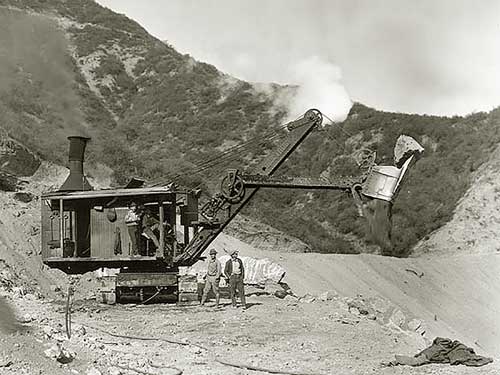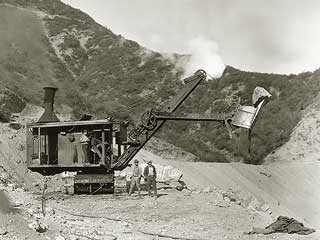What is Capital Equipment?
Capital equipment assets earn their keep by producing returns.
Business owners acquire costly capital equipment for one purpose: to operate the business and earn income. As a result, they naturally think of capital asset acquisition as a form of business investment, which means they expect these assets to deliver returns that outweigh their costs. Capital equipment that sits idle for long periods, or otherwise turns unproductive, becomes a target for replacement or liquidation.
Define Capital Equipment
Capital equipment refers to costly, long-lasting goods (assets) a business acquires and owns but does. The designation capital means these assets serve as resources for operating the business and earning income.
Capital equipment items typically include such things as machine tools, vehicles, construction equipment, instruments, store furnishings, and networking and computing equipment—to name a few.


Owners expect capital equipment to produce operating benefits over a long time, usually several years or more. Accountants commonly classify these items as capital assets. And, they track asset earning performance year-to-year with financial metrics such as return on total assets (ROA) and Total Asset Turnover.
Most firms establish criteria for deciding which items they acquire are capital items, and which are not. These criteria result partly from local tax laws, but they also reflect accounting policy choices by the firm's management. These criteria typically specify that an item qualifies as a capital item if it meets at least three conditions. Capital items:
- Have a minimum useful service life or economic life (e.g., one year or more).
- Have an acquisition cost above a certain threshold (e.g., $1,000 or more).
- Contribute value to the firm's business performance.
Capital Equipment Explained in Context
Business firms usually handle capital and non-capital items differently in several areas:
- The acquisition process.
- Asset management and asset performance measures.
- Valuing and reporting.
This article further explains capital equipment decisions and accounting in these areas, in context with similar concepts from accounting and asset management.
Contents
- What is capital equipment?
- How does a business acquire capital items?
- How does a business manage and evaluate capital items?
- How does a business value and report capital items?
Related Topics
- For an Introduction to CAPEX and OPEX budgeting, see Budget.
- For more on capital review and capital decisions, see Capital Review Process.
- The article Asset explains asset accounting and lifecycle management.
- For more on the several meanings of capital in business, finance, and economics, see the article Capital.
Resources
Visit the Master Analyst Shop. Download Ebooks & Software Today!
How Does a Business Manage Capital Items?
Some firms establish a lifecycle management process for managing capital assets. The process purpose is to maximize asset contributions to the business while minimizing asset lifecycle costs. The process typically expects each asset class to have a productive economic life, running for a certain number of years. Assets are within their "economic lives" when they return more value to owners than they cost to operate.
Local asset managers and tax authorities usually designate an economic life they expect for individual asset classes—vehicles, factory machines, office furniture, or store equipment, for instance. Owners expect assets to earn more in their lives than it costs to acquire, maintain, and operate them. When asset costs exceed asset returns, the asset is beyond its "economic life."
Business firms expect their capital equipment assets to justify their acquisition and existence throughout their economic life. Managers of capital equipment usually assess asset performance periodically, with profitability metrics and investment metrics such as return on investment (ROI), return on assets (ROA), total asset turnover, and return on capital employed (ROCE). Under-performing assets may become targets for efforts designed to improve asset utilization. Or, they may become targets for replacement or liquidation. For more on managing assets and measuring asset performance, see Asset.
Valuing and Reporting Capital Items
Firms value and report capital equipment assets such as factory machines on the Balance Sheet differently than they treat noncapital assets (such as accounts receivable). For instance, capital equipment assets, in particular, have a reported book value on the Balance Sheet that can change during asset life. Book value changes may result from:
- Accumulating and Charging Depreciation expense against asset book value.
- Value adjustments that local tax laws and Generally Accepted Accounting Principles (GAAP) permit or require.
Where Do Capital Assets Appear on the Balance Sheet?
Balance Sheet Structure starts with three sections, all of which have a place in the Balance Sheet Equation:
Assets = Liabilities + Equities
Capital assets and their book values may appear on the Balance Sheet—not surprisingly—in the Assets section.
- Capital equipment assets may appear on the under Balance Sheet assets in a category of their own, Capital Assets.
- However, the same assets may also list in asset account categories such as Tangible Asset, Long-Term Assets, or Property Plant & Equipment.
- Alternatively, the firm's accountants may carry capital equipment under asset category names for the nature of the asset, such as Computer Equipment, Manufacturing Equipment, or Store Assets.
For more on asset valuing and reporting see Asset.

